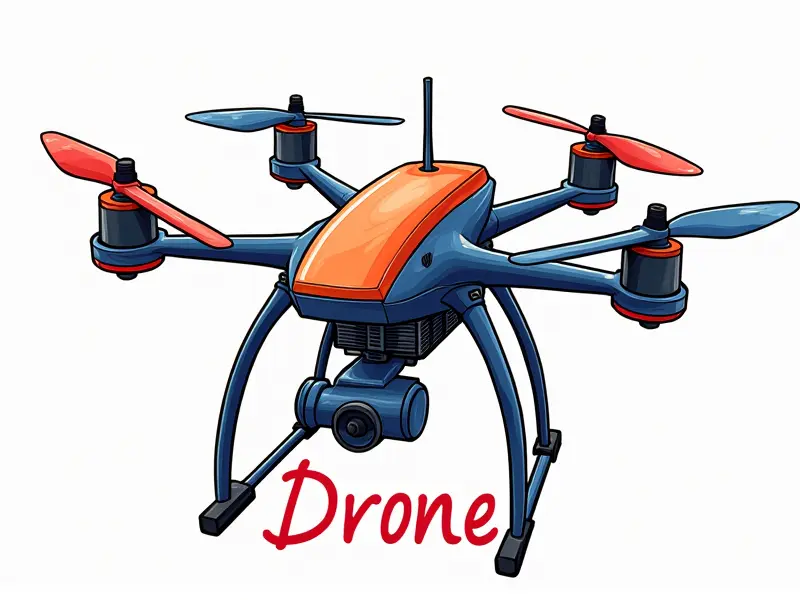Can I use Arduino for drones?

Arduino in Drone Programming: A Guide
Welcome to the world of drone programming with Arduino! This guide aims to provide a comprehensive overview of how you can use Arduino for various types of drones, including RC quadcopters and FPV racing drones. We'll explore the feasibility of building DIY drones using Arduino technology and discuss its role in drone control.
Building Drones with Arduino: Feasibility
The question often arises whether it's feasible to build a drone using an Arduino board. The answer is yes, but there are limitations. While Arduino boards like the Uno or Mega can handle basic flight control tasks for small drones, they may not be suitable for more complex applications due to their limited processing power and memory.
For simple DIY projects such as toy drones or educational purposes, Arduino is an excellent choice. However, for advanced features like GPS navigation, obstacle avoidance, or high-speed FPV racing, a more powerful microcontroller might be necessary.
DIY Drones with Arduino Guide
If you're interested in building your own drone using Arduino, here’s a step-by-step guide to get you started:
- Select the Right Components: Choose an appropriate Arduino board (e.g., Arduino Mega), ESCs, motors, propellers, frame, and battery.
- Wiring Setup: Connect your ESCs to the Arduino via PWM pins. Ensure proper power distribution from the battery to the ESCs and Arduino.
- Programming Basics: Write a basic flight control program using libraries like Firmata or custom code for motor control, altitude hold, and stability.
Arduino Control for RC Quadcopters
RC quadcopters are popular among hobbyists due to their simplicity and affordability. Arduino can be used to control these drones by interfacing with the ESCs and handling basic flight commands like takeoff, landing, and hover.
- Motor Control: Use PWM signals from the Arduino to control motor speed.
- Sensors Integration: Integrate sensors like accelerometers or gyroscopes for better stability and orientation control.
Arduino for FPV Racing Drones
FPV racing drones require precise control and high-speed performance. While Arduino can handle basic flight control, it might not be sufficient for advanced features required in FPV racing:
- Basic Control: Use Arduino to manage motor speed and basic flight commands.
- Limited Features: Due to processing limitations, consider using more powerful microcontrollers or dedicated drone controllers for complex tasks like real-time video transmission and advanced navigation.
Using Arduino in Drone Technology
The integration of Arduino into drone technology has opened up new possibilities for hobbyists and enthusiasts. Here are some ways you can leverage Arduino:
- Sensor Data Processing: Use sensors like GPS, ultrasonic sensors, or cameras to gather data.
- Data Logging: Log sensor data onto an SD card for analysis and debugging purposes.
Is Arduino Suitable for RC Drones?
Arduino is suitable for basic RC drones that require minimal processing power. However, it may not be the best choice for high-performance or complex applications:
- Pros: Cost-effective, easy to program, and readily available.
- Cons: Limited memory and processing speed compared to dedicated drone controllers.
The Role of Arduino in Drone Control
Arduino plays a crucial role in basic flight control for drones. It can handle tasks such as motor control, sensor data collection, and simple navigation commands. However, it's essential to understand its limitations when considering more advanced applications.
Arduino Integration in RC Drones
To integrate Arduino into an RC drone:
- Connect ESCs: Connect the Electronic Speed Controllers (ESCs) to the Arduino via PWM pins.
- Program Basic Functions: Write code for basic flight control functions like takeoff, landing, and hover.
DIY Drones: Leveraging Arduino Tech
Leverage Arduino technology in your DIY drone projects by focusing on simple yet effective applications. Here are some ideas:
- Toys and Educational Projects: Build toy drones or educational kits for learning basic flight control.
- Sensor Integration: Use sensors to enhance stability, navigation, and data logging capabilities.
Arduino Compatibility with Drones Explained
To ensure compatibility between Arduino and your drone project:
- Select Compatible Components: Choose ESCs and motors that are compatible with the PWM signals from your Arduino board.
- Understand Power Requirements: Ensure proper power distribution to both the Arduino and ESCs without overloading the system.
Conclusion
In conclusion, while Arduino is a fantastic tool for basic drone projects such as RC quadcopters and educational kits, it may not be suitable for high-performance applications like FPV racing drones. Understanding its limitations and leveraging its strengths can help you build effective DIY drones that meet your needs.

